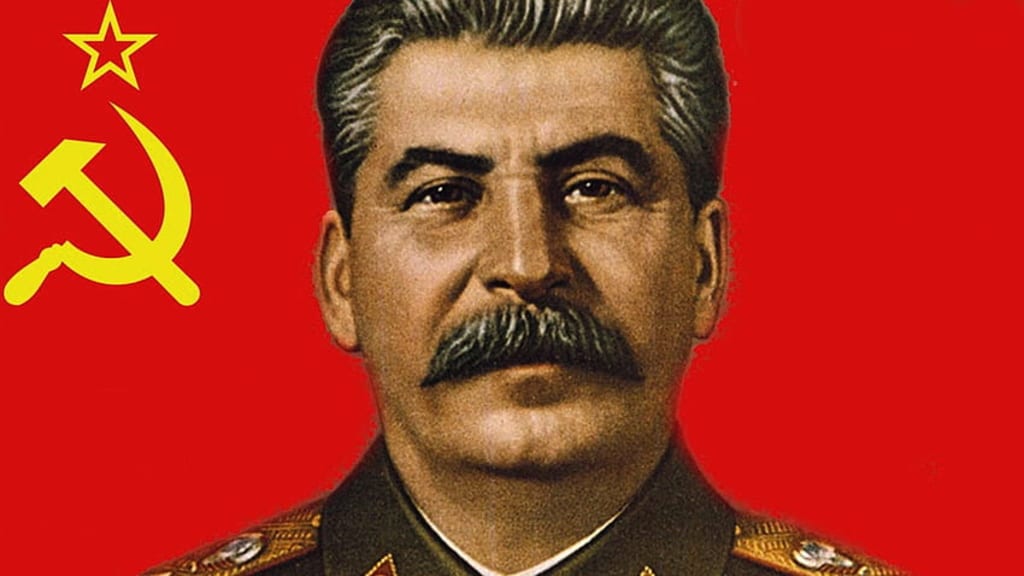Joseph Stalin: The Brutal Architect of Soviet Totalitarianism
Real Life Case

Introduction:
Joseph Stalin, one of the most notorious dictators in history, ruled the Soviet Union with an iron fist for nearly three decades. His reign was characterized by a ruthless pursuit of power, mass repression, and the implementation of policies that resulted in the suffering and death of millions. This article delves into the life, policies, and legacy of Joseph Stalin, examining the factors that contributed to his rise to power and the profound impact he had on the Soviet Union and the world.
Early Life and Revolutionary Ideals:
Joseph Vissarionovich Stalin was born on December 18, 1878, in Gori, Georgia, then part of the Russian Empire. Coming from a humble background, Stalin became involved in revolutionary activities as a young man and was drawn to the radical ideas of Marxism. He played an active role in the Bolshevik Party and eventually rose through its ranks, positioning himself as a key figure in the Russian Revolution of 1917.
Consolidation of Power:
After the death of Vladimir Lenin in 1924, Stalin engaged in a power struggle within the Soviet leadership. Through a combination of political maneuvering, purges, and the elimination of rivals, Stalin emerged as the undisputed leader of the Soviet Union by the late 1920s. He transformed the Soviet Union into a totalitarian state, centralizing power and establishing a cult of personality around himself.
Collectivization and Industrialization:
Stalin's policies of collectivization and industrialization aimed to rapidly modernize the Soviet Union and strengthen its economy. However, the implementation of these policies resulted in widespread hardship and human suffering. Collectivization led to the forced seizure of land from peasants, causing widespread famine and millions of deaths. Industrialization, though successful in some aspects, often came at the expense of worker rights and safety.
The Great Purge and State Terror:
Stalin's regime was marked by a reign of terror, epitomized by the Great Purge of the 1930s. Through a series of show trials, arrests, and executions, Stalin eliminated perceived political opponents, real or imagined, within the Communist Party and beyond. Millions were imprisoned in labor camps, known as the Gulag, where they faced harsh conditions and often lost their lives. The fear and paranoia instilled by Stalin's secret police, the NKVD, permeated Soviet society.
World War II and the Post-War Era:
Stalin's leadership during World War II played a crucial role in the defeat of Nazi Germany. However, his actions also contributed to the suffering of the Soviet people. The war led to immense casualties and devastation, and Stalin's policies of forced industrialization and rapid mobilization exacerbated the hardships faced by the population. The post-war era saw the consolidation of Soviet control over Eastern Europe, as Stalin implemented satellite states, leading to decades of Soviet dominance and suppression of dissent in the region.
Legacy and Human Cost:
Stalin's rule left an indelible mark on the Soviet Union and the world. His policies resulted in the deaths of millions of people through forced labor, executions, famines, and purges. The lasting trauma inflicted on Soviet society extended well beyond Stalin's death in 1953. The scars of his regime continued to shape the political, social, and economic landscape of the Soviet Union and its successor states for decades to come.
Controversy and Historical Interpretations:
Stalin's legacy remains a subject of controversy and varying historical interpretations. Some argue that his leadership was necessary to industrialize and modernize the Soviet Union, while others emphasize the immense human suffering caused by his policies. The debate over Stalin's role and responsibility in the crimes committed under his regime continues to spark discussion among historians and scholars.
Conclusion:
Joseph Stalin's reign of terror and totalitarian rule cast a long shadow over the 20th century. His brutal policies, mass repressions, and cult of personality resulted in the suffering and death of millions. By examining Stalin's life and the consequences of his actions, societies can strive to understand the dangers of unchecked power and the importance of safeguarding human rights and democracy. The memory of Stalin's atrocities serves as a reminder of the horrors that can emerge from the abuse of authority and the suppression of individual freedoms.
About the Creator
Zakria Mirza
My multifaceted abilities as a writer and leader shine brilliantly. With a dazzling literary prowess that captivates and mesmerizes, my words possess an exquisite eloquence, leaving readers spellbound.






Comments
There are no comments for this story
Be the first to respond and start the conversation.